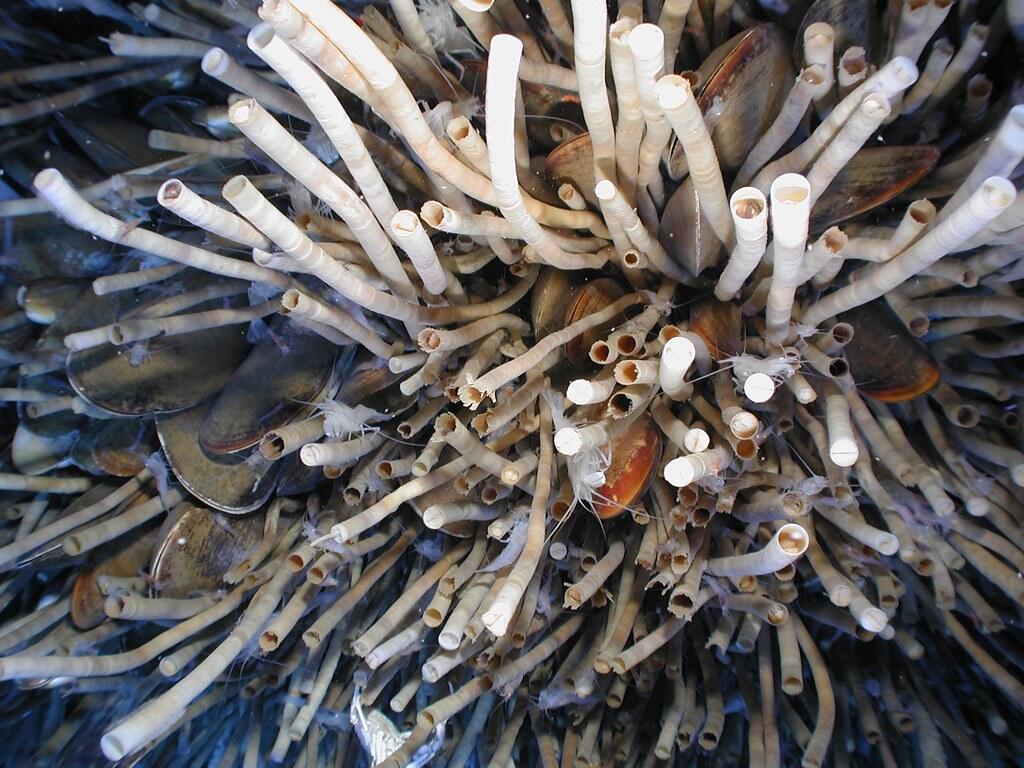WaterWords–Chemoherm
Better Rocks through Chemistry
Keep up to speed with our Falkor research cruise with this latest seafloor syntax!
From June 12 to July 3, the U.S. Geological Survey and Schmidt Ocean Institute will be conducting a research cruise off the coast of Oregon and Washington, hunting deep-sea bubbles and the creatures that eat them. While we post stories about our findings, we’ll also be posting little vignettes like these, in which we serve as your terminology tour-guides to the unusual and hard-to-pronounce words that dwell in the depths of deep-ocean science.
The WaterWord: Chemoherm
Definition:
- Chemoherms are carbonate rock formations that have built up around methane seeps from the bodies of creatures that live near the methane seeps and rely on them for food, either directly or by consuming the organisms that live off the methane.
Etymology:
- Chemoherm is made up of chemo- and herm. Chemo- comes from chemistry, which itself comes from alchemy, which has uncertain origins. It seems to be a mix of an old name for Egypt, Khemia, and the Greek word khymeia, meaning “to pour out.” Herm, meanwhile, comes from the ancient Greek word herma, meaning “reef.”
Use/Significance in the Earth Science Community:
- Chemoherms are significant geologic features on the seafloor and study of them can indicate what kinds of organisms were living around the methane seep that led to the creation of the chemoherm.
U.S. Geological Survey/Schmidt Ocean Institute Use:
- USGS and SOI are collaborating on a research cruise off the coast of Oregon and Washington that will study methane seeps in a region known as the continental margin. It is likely that near these seeps will be chemoherms.
Next WaterWord: Bathymetry
Enjoying our cruise log and blog? Keep up with us on Facebook, Twitter or right here on the USGS website!
Get Our News
These items are in the RSS feed format (Really Simple Syndication) based on categories such as topics, locations, and more. You can install and RSS reader browser extension, software, or use a third-party service to receive immediate news updates depending on the feed that you have added. If you click the feed links below, they may look strange because they are simply XML code. An RSS reader can easily read this code and push out a notification to you when something new is posted to our site.


